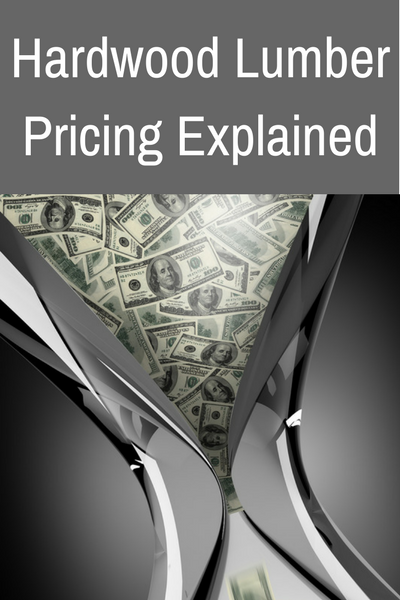The price of hardwood lumber can vary based on many factors. The answer to a question that seems straight-forward (e.g., “how much is a board of ipe?”) actually depends on a number of variables, some of which we’ll go over here.
How much are you buying?
Most of the labor involved in filling an order is in finding it, pulling it, and transporting it around the warehouse. That combined labor takes about the same amount of time regardless of how much you buy. Therefore, you’ll typically get a better price on a large order compared to a small one.
What size do you need?
Obviously, standard size boards are going to be cheaper. Since lumber is a natural product, its size is going to be limited by the size and shape of the trees it comes from. Longer or wider boards may cost you more, depending on the species. For example, wide walnut is very hard to come by and you can expect to pay a premium for it, but wide poplar or oak are more readily available and won’t cost you much more.
Where does it come from?
Transportation is a major cost in the lumber industry. Domestic woods that grow in your local area are going to incur much less transportation cost than exotics shipped halfway around the world. If the lumber has to cross several national borders, you’ll probably be paying for inspection and fees at each border as well. The political climate in the countries the lumber is sourced from also affects the price. For instance, if you’re buying an African species, it may have to be transported through countries that are undergoing civil wars, making transportation risky and more expensive.
When do you want it?
Some hardwoods are more in demand during certain seasons. For instance, any kind of hardwood decking is going to be expensive in summer, when everyone wants to build a deck. Buying in the off-season can save you money, although you have to factor in lower availability.
What’s the weather?
Species that come from places with rainy seasons are generally harvested during the drier parts of the year, not year-round, so supply can vary throughout the year and the time of year that you buy them affects the price. If there has been an unseasonably long wet season, this can affect both the availability and price of the product. As responsible stewards of the land being harvested, operations typically work around the rainy season. Cypress lumber is harvested from very wet areas and is especially dependent on a dry season for harvesting.
What quality do you need?
Lumber is a natural product, with knots, defects and natural characteristics that influence the grade of each piece of lumber. Each log is produces a combination of higher and lower grade lumber. If you want to buy only the part of the lumber that is only the highest quality and grade, this increases the price. If you are able to use a product with knots and defects, the lumber price will be lower.
This is when it is important to know what lumber grade best suits your project. Learn more about lumber grades.
How is the lumber price being quoted?
As we’ve discussed in the past, lumber pricing can be quoted either net tally or gross tally. The price per board foot is different for net and gross because each counts the volume of lumber differently.
Learn more about net tally and gross tally.
Hardwood Lumber Pricing is Influenced by Many Factors
The price of hardwood lumber varies by the size of your order, the length and width you require, the country of origin, the season in which you’re purchasing it, the grade you need, and even the weather. If you’re not sure what you need, talk to your trusted supplier.
Contact a trusted hardwood distributor is your area.

